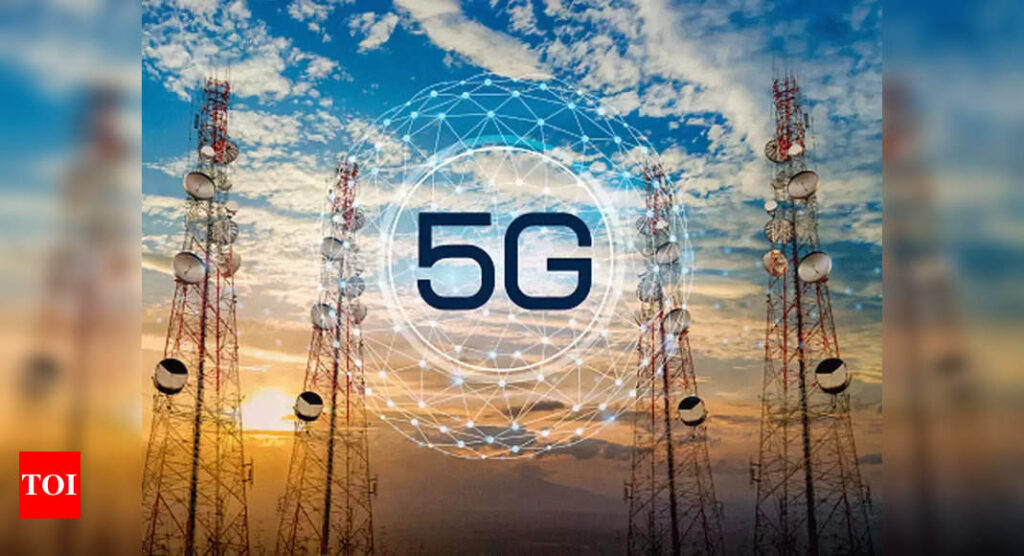[ad_1]
The ongoing Israel-Palestine war may be bad news for telecom companies looking to expand their 5G footprint. As a potential escalation of Israel‘s war with Palestinian militant group Hamas could reportedly push up costs of imported 5G network gear. According to a report in the Economic Times, the cost may escalate by as much as Rs 2,000-2,500 crore initially and slow down roll outs of next-gen networks by India’s top telcos, say industry executives, bankers and analysts.
This, the report says, is as a wider, long-drawn conflict could initially trigger around a 3-4% dip in the rupee versus the US dollar. This may lead to an increase in telcos’ foreign debt servicing costs and impact profitability in coming quarters as a sizable chunk of the $7 billion-plus telecom sector debt is dollar-denominated, the people cited added.
Rise in dollar value may hurt telecom companies
“The Israel-Hamas war has not yet caused an alarming fall in the rupee vs the US dollar, but if it escalates and becomes a wider global conflict, there could be some currency volatility with the rupee potentially falling around 3-4% vs the US dollar, which would make telcos’ 5G network gear imports costlier as around two-thirds of equipment used in domestic networks is still imported,” Rohan Dhamija, head (India & Middle East) at Analysys Mason, told ET.
Top bankers told the publication that the military conflict posed fresh headwinds for the domestic currency as global risk aversion had already increased safe-haven demand for the US dollar and weakened appetite for emerging market currencies such as the rupee. They, though, said the Reserve Bank of India (RBI) has been regularly intervening in the currency market through dollar sales from its reserves to curb excessive volatility.
“If I look at current price volatility, as long as it continues, the range can be capped at 83.30/$1 on the upside because that is kind of a ceiling which the RBI has defined. But if globally things were to take a turn for the worse and if USD/INR takes off, it (the rupee’s exchange rate) could even expand to 84.50/$1,” said Anindya Banerjee, vice president for currency derivatives at Kotak Securities.
Nearly 67% of telecom gear used in local phone networks is imported primarily from foreign vendors such as Ericsson, Nokia and Samsung, which is why big telcos such as Reliance Jio, Bharti Airtel and Vodafone Idea (Vi) are estimated to collectively splurge around $7 billion (over ₹58,000 crore) annually on imported networks.
This, the report says, is as a wider, long-drawn conflict could initially trigger around a 3-4% dip in the rupee versus the US dollar. This may lead to an increase in telcos’ foreign debt servicing costs and impact profitability in coming quarters as a sizable chunk of the $7 billion-plus telecom sector debt is dollar-denominated, the people cited added.
Rise in dollar value may hurt telecom companies
“The Israel-Hamas war has not yet caused an alarming fall in the rupee vs the US dollar, but if it escalates and becomes a wider global conflict, there could be some currency volatility with the rupee potentially falling around 3-4% vs the US dollar, which would make telcos’ 5G network gear imports costlier as around two-thirds of equipment used in domestic networks is still imported,” Rohan Dhamija, head (India & Middle East) at Analysys Mason, told ET.
Top bankers told the publication that the military conflict posed fresh headwinds for the domestic currency as global risk aversion had already increased safe-haven demand for the US dollar and weakened appetite for emerging market currencies such as the rupee. They, though, said the Reserve Bank of India (RBI) has been regularly intervening in the currency market through dollar sales from its reserves to curb excessive volatility.
“If I look at current price volatility, as long as it continues, the range can be capped at 83.30/$1 on the upside because that is kind of a ceiling which the RBI has defined. But if globally things were to take a turn for the worse and if USD/INR takes off, it (the rupee’s exchange rate) could even expand to 84.50/$1,” said Anindya Banerjee, vice president for currency derivatives at Kotak Securities.
Nearly 67% of telecom gear used in local phone networks is imported primarily from foreign vendors such as Ericsson, Nokia and Samsung, which is why big telcos such as Reliance Jio, Bharti Airtel and Vodafone Idea (Vi) are estimated to collectively splurge around $7 billion (over ₹58,000 crore) annually on imported networks.
[ad_2]
Source link











More Stories
Google Maps: Three privacy features coming to Google Maps on Android, iPhones
Most-Downloaded IPhone App: This Chinese app was the most-downloaded iPhone app in the US in 2023
Ukraine’s largest mobile operator goes offline for millions of users after cyber attack